Australian Pain Society Newsletter









Dr Lincoln Tracy
Hi everyone,
March already – where has the start of 2024 gone? At this rate we will all be in Darwin for the 44th Annual Scientific Meeting of the Australian Pain Society before we know it.
This month I had the pleasure of chatting with the society’s latest Rising Star Award Winner, Dr Jane Chalmers, about her career, what winning the award means to her, and what she has in store for attendees in her upcoming plenary. You can check out our full chat on the APS blog
I was also fortunate enough to speak with Cheryl Stucky and Christine Chambers, our fantastic international keynotes, as part of the lead up to the ASM and can confirm they are both incredibly excited about getting to come “down under” next month. Keep an eye out for my interviews with Cheryl and Christine – they’re a great way for new members and/or first-time attendees to get to know our international keynotes a little better.


Three members from our Basic Pain Research SIG – Tilde Olsson Moerk, Catherine Guo, and Gila Moalem Taylor – review an article looking exploring long-term tactile hypersensitivity after nerve crush injury in mice. A key point of the article is that the most common animal models of neuropathic pain used in research are mechanistically different from the types of injuries we see in humans that result in chronic pain.
Discussing the need to have clinically relevant and valid models is not new, but it remains an important point as the pain management field continues to develop and advance. Studies such as these, which show comprehensive differences between what we do in animals and what happens in humans, are a good reminder of this.
Finally, in support of March being Global Endometriosis Awareness Month we have made the newsletter colour scheme yellow.
Looking forward to seeing everyone in Darwin next month for a fantastic few days on Larrakia country!
Until next time,
Lincoln

for the future. A more detailed report of our accomplishments from the previous year will be presented at the Annual General Meeting (AGM) later this month. However, allow me to highlight some key activities.
In 2024, we are poised to achieve significant milestones in education. We commenced the year with a webinar collaboration with the Australian Music Therapy Association, hosting a Music Therapy for Chronic Pain Seminar on February 20. The highly anticipated Annual Scientific Meeting (ASM) promises to be an exceptional event as we gather in Darwin, in the Top End on Larrakia country. The ASM’s dynamic scientific program, featuring esteemed international keynote speakers Drs Christine Chambers and Cheryl Stucky, is certain to inspire. I am particularly excited about the diverse program, covering topics ranging from outback pain management to cutting-edge innovations such as nanotechnology and artificial intelligence in pain management. Additionally, the inclusion of the new Psychology in Pain Management workshop in the pre-conference program is a testament to our commitment to comprehensive education.
I am pleased to announce that the revised position statement concerning the role of
underscores our commitment to raising awareness and addressing the critical issue of wait times for individuals in the Australian community grappling with persistent pain. It also emphasises the essential staffing requirements for optimal clinical support and meeting ongoing demands.
Membership
Our focus remains on enhancing educational offerings and member engagement across all stages of professional development. Exciting initiatives are in development, including the launch of our Mentorship Program at the ASM in Darwin and the return of painSTAR in 2024, our highly regarded pain School for Translation And Research.
Looking ahead, I am committed to providing a comprehensive report at the upcoming AGM. For those who have already registered for the ASM, I eagerly anticipate connecting with you in Darwin. For those who have not yet registered, I encourage you to do so now and join us for what promises to be a rewarding conference experience, as always!
Wishing you all the best, and looking forward to our future interactions.
Warm regards,
Joyce McSwan APS President
Non-Member Registration Price VS Becoming an APS Member
$1,625 OR
Being a member saves you up to $510 after membership fees!
APS Student Member Registration Price Only $325
Being a member saves you up to $1,235 after membership fees!
Tell your colleagues who are interested in attending APS 2024 so they can save on their registration too! Registration fees increase from Wednesday 17 April, don’t register late and pay more – get in now!
Become an APS Member here
Should you have any queries about the conference, please contact the Conference Secretariat. We look forward to welcoming you to Larrakia country/Darwin, NT!


Dr Christine Chambers
Monday 22 April, Plenary 1
From Research to the Real World: Solutions for Kids in Pain
Wednesday 24 April, Plenary 4
Reimagining Pain: What we can Learn from Children, Youth and Families
Professor Cheryl Stucky
Monday 22 April, Plenary 2
Episodic and chronic pain targets in neuropathic pain
Wednesday 24 April, Plenary 4
SUNDERLAND LECTURE: Skin cells actively contribute to neuropathic pain
Sunday 21 April 2024
The APS’s Pre-Conference Workshop Day provides delegates with a flexible approach when it comes to choosing what they attend. All workshops are offered as half days, giving delegates the opportunity to personalise their own learning.
offering multidisciplinary insights into the complex nature of pain management from a variety of medical, nursing, research, and allied health perspectives.
Pick the Brain of a Pain Researcher!
Monday 22 April 2023, 5:30pm - 6:30pm
Have you ever wanted to ask a well-known researcher – how did you know this was for you? How did you know what opportunities to say yes to and what to say no to? If you have wanted to ask, now is your chance!
This session is for higher degree and early career researchers (HDRs & ECRs) as well as those who are considering research careers in the future and includes networking opportunities with several of the plenary speakers.
Don’t miss out, register today!
For more information, visit the conference website.

Join Offroad Touring for a private tour of Litchfield National Park before the conference starts. Discounted tickets have been organised exclusively for APS delegates and their guests. Registration required.
Sunday 21 April
Welcome Reception
Venue: Exhibition Hall, Darwin Convention Centre
Time: 6.00 – 7.30pm
Cost: Included in registration fee for full delegates
Join us for a first look at the exhibition hall and a chance to catch up with colleagues and delegates you haven’t seen since Canberra!
Basic Pain Research & Pain in Childhood SIG Dinners
Venue: Wharf One
Time: From 7.30pm
Cost: $90 per person, guests welcome
Enjoy a few drinks with friends and colleagues interested in Basic Pain Research and Pain in Childhood. Delegates don’t have to be a member of the SIGs to join, everyone is welcome.
Only metres from the Darwin Convention Centre and with uninterrupted views of the Darwin Waterfront, The Precinct Tavern is a local pub that offers a sense of familiarity.
With a dedicated reserved space outdoors for APS delegates, join colleagues to wind down and recap on the days learnings over a complimentary wine or beer.
Monday 22 April & Tuesday 23 April
Qi Gong at Sunrise
Venue: Peninsula Lawns, Darwin Waterfront
Time: 7.00 - 7.30am
Dress: Comfortable, swimmers optional
Cost: All welcome, no registration required
Join Professor Zhen Zheng from RMIT University for a 20 minute Qi Gong session on the Peninsula Lawns, followed by the opportunity to throw yourself into the saltwater lagoon while the sun rises over Larrakia country. What a perfect way to start your morning!

Tuesday 23 April & Wednesday 24 April
Crocosaurus Cove
Venue: Crocosaurus Cove, 58 Mitchell St, Darwin City
Time: From 3.30pm. Closes at 6.00pm
Cost: Adult: $32 per person | Child (4 - 15 years): $20 per person
Crocosaurus Cove, located in the heart of Darwin city, allows visitors a unique, up close and personal view of Australia’s iconic Saltwater Crocodiles. Delegates to make their own way, guests & children welcome.
RFDS Darwin Tourist Facility, including Bombing of Darwin Harbour experience
Venue: RFDS Darwin Tourist Facility, Stokes Hill Wharf, Darwin City
Time: From 3.30pm. Closes at 5.00pm
Cost: $25.50 per person, guests & children welcome
A short stroll from the Darwin Convention Centre, the Royal Flying Doctor Service Museum tells two iconic Territory stories. The RFDS started Territory operations in 1939, the Museum also tells the tale of the bombing of Darwin Harbour during WWII. See, experience, and learn through the wonder of technology as this facility brings history to life. Delegates to make their own way.
A tropical oasis in the middle of Darwin City, once
Time: 4.00 - 5.00pm
Cost: $40 per person, guests (18+ only) welcome
For full details on the APS 2024 social program, visit the conference website.
Secure your place at these enjoyable and entertaining social functions by registering today!
Should you have any queries about the conference, please contact the Conference Secretariat.

21-24 APRIL PAIN IN
2024 AUSTRALIAN PAIN SOCIETY 44TH ANNUAL SCIENTIFIC MEETING
DARWIN CONVENTION CENTRE, NT In

Managing acute and chronic pain for vulnerable children
8.30am - 12.30pm, Sunday 21 April 2024
Darwin Convention Centre, NT
Registration Fees starting from $160 WORKSHOP OVERVIEW
This multidisciplinary workshop commences with evidence showing links between sensory modulation and pain and treatment options, followed by research focused on pain experiences of children with cerebral palsy and developmental disabilities.
The second section of the workshop explores procedural pain; initially considering improving procedures for children who have experienced medical trauma. Finally, we will open general multidisciplinary discussion of Australian and international procedural pain management experiences to inform the development of future procedural pain guidelines.
For further information: www.dcconferences.com.au/aps2024 Questions? Please email us at apsasm@dcconferences.com.au

21-24 APRIL
2024 AUSTRALIAN PAIN SOCIETY 44TH ANNUAL SCIENTIFIC MEETING
DARWIN CONVENTION CENTRE, NT In
Diving into the connections between trauma and complex chronic pain
8.30am - 12.30pm, Sunday 21 April 2024
Darwin Convention Centre, NT
Registration Fees starting from $160 WORKSHOP OVERVIEW
This workshop provides an opportunity for discussion of the broader psychological issues in pain management, including understanding mechanisms of behavioural change, prevention of chronicity, and the challenges of managing the complexity of mental health comorbidities. For its inaugural event, the 2024 workshop will focus on the complexity of managing chronic pain and trauma, and will aim to provide a deeper understanding of this relationship to more effectively inform clinical decision-making. It will teach a set of foundational principles from pain neuroscience and a trauma-informed perspective to effectively guide the assessment and management of those with pain and trauma
For further information: www.dcconferences.com.au/aps2024 Questions? Please email us at apsasm@dcconferences.com.au

21-24 APRIL FUNDAMENTALS OF PAIN PRE-CONFERENCE
2024 AUSTRALIAN PAIN SOCIETY 44TH ANNUAL SCIENTIFIC MEETING
DARWIN CONVENTION CENTRE, NT
8.30am - 12.30pm, Sunday 21 April 2024
Darwin Convention Centre, NT
Registration Fees starting from $160 WORKSHOP OVERVIEW
This will be a succinct overview of the physiology, clinical assessment, and clinical management of pain. The workshop is aimed at the general practitioner, specialist, allied health clinician or psychologist looking for an introduction to, or update on, persistent pain management. This workshop is grounded in a biopsychosocial understanding of pain mechanisms and developing a mechanism-based approach to pain assessment and management. And will compliment those with an interest in attending one of the afternoon sessions on pharmacology, psychology or physiotherapy.
For further information: www.dcconferences.com.au/aps2024 Questions? Please email us at apsasm@dcconferences.com.au
For timings, registration fees and further information on the Pre-Conference Workshops visit: www.dcconferences.com.au/aps2024/Pre-Conference_Workshops

2024 AUSTRALIAN PAIN SOCIETY 44TH ANNUAL SCIENTIFIC MEETING
DARWIN CONVENTION CENTRE, NT

1.30pm - 5.00pm, Sunday 21 April 2024 Darwin Convention Centre, NT
Registration Fees starting from $160 WORKSHOP OVERVIEW
This workshop will showcase the latest in Australian basic pain research from early to mid-career and senior researchers and provide a forum to discuss mechanisms of nociception and pain across all levels of investigation: from molecular and cellular analyses to studies in animals and humans (pre-clinical or clinical).
The workshop is open to all interested in mechanisms of nociception and pain, including basic and clinical researchers, health professionals and students at all levels.
For further information: www.dcconferences.com.au/aps2024 Questions? Please email us at apsasm@dcconferences.com.au

WORKSHOP OVERVIEW
This workshop will present an overview of opportunities and challenges in pain management in Aboriginal and Torres Strait Islander Communities. A considerable proportion of the workshop will be spent identifying, discussing and practising culturally-informed strategies, including the Clinical Yarning model of clinical communication, to enable attendees to develop their skills in working with this population group. This workshop will be highly practical, appropriate for any clinician who deals with patients in pain. The specific skills practiced in this workshop will be able to immediately implemented into clinical practice.
For further information: www.dcconferences.com.au/aps2024 Questions? Please email us at apsasm@dcconferences.com.au

21-24 APRIL
2024
DARWIN CONVENTION CENTRE, NT
1.30pm - 5.00pm, Sunday 21 April 2024 Darwin Convention Centre, NT
Registration Fees starting from $160
WORKSHOP OVERVIEW
This interactive workshop will focus on the latest pharmacological evidence to manage pain in complex patients with end stage kidney disease and palliative care. Practical tips will be discussed and emerging trends in pain management will be presented. This includes the emerging role of medicinal cannabis for pain management and how real time prescription drug monitoring programs can be used to optimise pain management strategies. Practical cases studies will be presented to ensure members from a variety of healthcare settings can implement the latest principles for pain management.
For further information: www.dcconferences.com.au/aps2024 Questions? Please email us at apsasm@dcconferences.com.au
For timings, registration fees and further information on the Pre-Conference Workshops visit: www.dcconferences.com.au/aps2024/Pre-Conference_Workshops

2024 AUSTRALIAN PAIN SOCIETY 44TH ANNUAL SCIENTIFIC MEETING
DARWIN CONVENTION CENTRE, NT

8.30am - 5.00pm, Sunday 21 April 2024
Darwin Convention Centre, NT
Registration Fees starting from $160 WORKSHOP OVERVIEW
This workshop aims to be engaging and practical with a focus on managing acute pain and the challenging cohort with co- existing chronic pain. In keeping with territory strengths we will explore strategies to engage Indigenous Australians. There will be a session focusing on pelvic pain and a third session with world class speakers from physiotherapy and psychology sharing strategies for the acute pain round and finish the day with some topical, cutting edge pharmacology. The workshop is divided into two half days and we encourage attendance at both.
For further information: www.dcconferences.com.au/aps2024 Questions? Please email us at apsasm@dcconferences.com.au
The 2024 Australian Pain Society (APS) Annual General Meeting (AGM) will be held on Wednesday 20 March 2024 from 5:30 – 6:30pm AEDT, via Zoom.
A General Business Meeting (GBM) will immediately follow the AGM.
If you are unable to attend the AGM, your apology would be most appreciated.
A formal Notice of the AGM along with the 2024 Agenda, Proxy form, Minutes from the 2023 AGM and GBM, and other documents has been distributed.
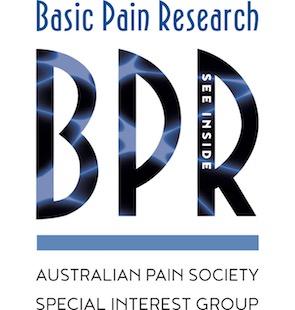

The Australian Pain Society (APS) Pain in Childhood Special Interest Group (PinC SIG) 2024 Annual General Meeting (AGM) will be held on Thursday 14 March 2024 from 5:30 - 6:30pm AEDT, via Zoom.
A General Business Meeting (GBM) will immediately follow the AGM.
Reminder: Only current APS PinC SIG members have the right to nominate and vote.
Formal notice of the APS Pain in Childhood SIG AGM along with the 2023 Agenda, Proxy form, and Minutes from the 2022 AGM and GBM has been distributed.
We hope to see our PinC SIG members there!
Would you like to be featured in an APS member spotlight?
Email the APS Secretariat (aps@apsoc.org.au) if you would like to complete a short interview to introduce yourself and your work to the broader membership.
Internationally renowned pain self management expert Pete Moore has taken his online presence to the next level, working with academics and industry to create a fully interactive AI version of himself to help carry on conversations about himself, pain management, and the Pain Toolkit.
“I’m fed up with talking about my pain,” Moore joked at the launch of the project last year.
“Now AI Pete can do it for me.”
Moore filmed responses to over 300 questions during AI Pete’s development. Viewers can ask AI Pete questions and receive relevant responses in real time – just like chatting with the real Pete.
“Living with persistent pain can feel very isolating, but this resource provides around-the-clock access to information, advice, and support whenever it is needed, and that is a game changer,” Moore said.
“I know how much a tool like this would have helped me back in the day, so I’m incredibly proud of what we have achieved.”

The AI Pete project was undertaken by the Centre for Rehabilitation at Teesside University and AI specialists StoryFile. The work was funded by the EU Interreg North-West Europe VR4Rehab project and the National Institute for Health and Care Research Applied Research Collaboration North East and North Cumbria.


The Australian Pain Society is delighted to announce that painSTAR is returning to the Novotel Barossa Valley Resort, Adelaide Hills, from 10 - 14 November 2024.
painSTAR brings together a group of exceptional clinical and early-mid career academic pain researchers to participate in an intensive program focussed on linking the bench to bedside and the boardroom.
Pain Schools foster interdisciplinary collaboration, accelerated translation of research findings to care delivery, and the development of skills to help influence political/health service systems – all topics that are critical for high quality translational pain research but are rarely covered in standard teaching/conference curriculum. Consumer representatives will once again be part of the faculty, providing delegates with exposure to the personal and social consequences of living with persistent pain, and providing inspiration about the importance of translational pain research.
Applications for painSTAR 2024 will open early April 2024.
Please keep an eye on the APS Newsletter and website for further announcements!
Further information coming soon…
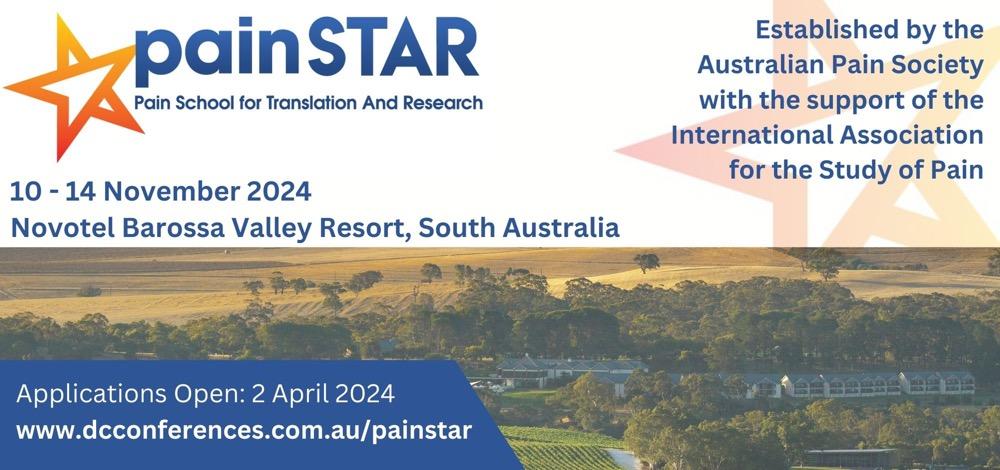

support among peers.
We had a wonderful evening at the very first Regional NSW Social Networking Event. The regional pain care and research community is strong; as evidenced by the healthy turn out. The attendees included nineteen professionals from backgrounds ranging from nursing staff, pharmacists, dietitians, occupational therapists, physiotherapists, and spinal surgeons alongside fantastic discovery and clinical researchers. We built new and strengthened old connections and learned about the brilliant - and diverse - work in our regional hub, which includes everything from neuromodulation to algae research! I heard many calls to organise another event, so I speak for all attendees in hoping that you can make it to the next Social Event. But where should we host it? Another regional hub? Rural centre? Sydney? Get in touch with your ideas and suggestions.

The pilot APS Mentorship Program for 2024 will be launched at the APS 2024 Annual Scientific Meeting.
Unlock your potential with the Australian Pain Society Mentorship Program!
Elevate your career in pain management—whether you’re a clinician, researcher, or educator. Gain valuable support and guidance as you navigate new roles. Join us to build an engaged, skilled community and shape the future of pain management together.
Calling clinicians, researchers, and educators in pain management!
Enhance your skills and join a vibrant pain community. Whether you’re starting or advancing, our program nurtures skills and confidence.
Shape the future – become a confident leader!
Why Join the APS Mentorship Program?
For Mentees: Embark on a transformative journey, gain invaluable insights, and foster professional development under the guidance of seasoned professionals.
For Mentors: Share your wisdom, shape the perspectives of the newcomers, and derive fulfillment by contributing to the development of the next wave of pain management clinicians, researchers, and educators.
Share this exciting opportunity with colleagues, friends, and anyone who could benefit from or contribute to the world of pain management.
Embark on a journey of growth, learning, and impactful contributions with the APS Mentorship Program!
Let’s shape the future of pain management together!
For more information >> apsoc.org.au



Peripheral nerve stimulation (PNS) for the treatment of peripheral neuropathic pain is used in the management of a variety of chronic pain conditions, including complex regional pain syndrome (CRPS), shoulder pain, phantom limb pain (PLP), post-surgical pain, and mononeuropathy. Since the first utilisation of PNS 50 years ago, the surgical techniques used for implantation of PNS devices, as well as device technology, have evolved, resulting in safer and less invasive procedures. The exact mechanism by which PNS provides pain relief for peripheral neuropathic pain remains unclear. However, centrally and peripherally acting mechanisms have been hypothesised. Central mechanisms involve PNS-induced inhibition of dorsal horn interneuron and wide dynamic neuron activity, as well as alterations in serotonergic and GABAergic pathways, leading to a reduction of central sensitisation and decreased hypersensitivity. Peripherally, PNS selectively stimulates Aв afferent nerve fibres that have an inhibitory effect on the transmission of pain impulses from small nerve fibres. Although PNS has been used for several acute and chronic pain conditions, the level of evidence supporting PNS as a treatment for peripheral neuropathic pain is limited. This
This systematic review included 14 prospective randomised controlled trials [RCTs]) evaluating
14 studies focused on assessing PNS treatment

studies), shoulder pain (two studies), PLP (three studies), post-surgical pain (two studies), and mononeuropathy (five studies). The number of included participants varied between studies, ranging between six and 147. The follow-up periods also varied between studies, with the shortest follow-up period being one to two weeks and the longest two to four years.
The aim of this study was to analyse data from prospective studies on the effectiveness of PNS for neuropathic pain. The primary outcome was pain intensity, while secondary outcome measures included changes in neurological deficits/neuropathy, quality of life, and adverse events.
Authors used several databases and keywords to find relevant studies. Prospective studies on humans using PNS for the treatment of peripheral neuropathic pain were included. General study characteristics, intervention data, and outcome data were extracted. Assessment of risk of bias was done using the Newcastle-Ottawa Quality Assessment Scale (NOS) for observational studies to evaluate the methodological quality. The Cochrane Risk
of Bias Tool (C-ROB) was used for assessing the risk of bias in RCTs. The Grading of Recommendations Assessment, Development, and Evaluation (GRADE) approach was used to assess the quality of evidence reported in each study.

All studies reported an improvement in pain, regardless of the neuropathic pain type. Most patients experienced a 30% reduction in pain intensity, with many patients reporting a 50% or more reduction in pain. The risk of bias assessment for observational studies showed a low risk for selection bias across all studies. When evaluating outcomes, 5 studies had a moderate risk of bias. Except for attrition bias, all domains demonstrated a low risk of bias when assessing the risk of bias for the included RCTs. The GRADE assessment was divided according to the different types of peripheral neuropathic syndromes: CRPS, shoulder pain, PLP, post-surgical pain, and mononeuropathy. Moderate-quality evidence supported pain relief with PNS treatment for patients diagnosed with PLP, whereas the quality of evidence for CRPS, shoulder pain, postsurgical pain and mononeuropathies was low. The overall quality of evidence was reduced as only three of the 14 included studies were RCTs. Studies also showed improvement in the secondary outcomes such as neurological function and quality of life.
The study demonstrated low-quality GRADE evidence supporting pain relief after treatment with implantable PNS in patients with peripheral neuropathic pain. The decrease in pain was observed consistently across various peripheral neuropathic pain conditions, with evidence of low quality for reduced pain intensity after PNS therapy for CRPS, shoulder pain, post-surgical pain, and mononeuropathies, and moderate quality evidence for PLP.
The inclusion of only prospective studies and evaluation of both the risk of bias, as well as evidence quality, are the strengths of this systematic review. However, some limitations can be found. Several prospective case series were included which lack generalisability. The included studies also had relatively short follow-up periods. Longer follow-up periods would be needed to find long-term effects and potential side effects from treatment with PNS. Further, differences in techniques regarding the implantation of PNS devices, such as implantation sites, specific techniques, practitioner expertise, and waveform settings between the studies, may impact the results. The use of PNS therapy for peripheral neuropathic pain is increasing in clinical practice. Although more research is needed to identify the underlying mechanisms, safety profile, and clinical efficacy, treatment with implantable PNS has the potential to improve the quality of life in patients who suffer from peripheral neuropathic pain.
The authors declare no conflicts of interest.
Long-term tactile hypersensitivity after nerve crush injury in mice is characterised by the persistence of intact sensory axons
Hyoung Woo Kim, Sang Wook Shim, Anna Mae Zhao, Dahee Roh, Hye Min Han, Steven J. Middleton, Wheedong Kim, Sena Chung, Errin Johnson, John Prentice, Mike Tacon, Marleen J.A. Koel-Simmelink, Luuk Wieske, Charlotte E. Teunissen, Yong Chul Bae, David L.H. Bennett, Simon Rinaldi, Alexander J. Davies and Seog Bae Oh; PAIN 164 (2023) 2327-2342.
Reviewers: Tilde Olsson Moerk (Research Intern), Catherine Guo (PhD Candidate), and Gila Moalem Taylor (Associate Professor), Translational Neuroscience Facility, School of Biomedical Sciences, University of New South Wales, UNSW Sydney, NSW, Australia. Reviewers: Angelica Nilszén (Research intern), Catherine Guo (PhD candidate), and Gila Moalem-Taylor (Associate Professor), Translational Neuroscience Facility, School of Biomedical Sciences, The University of New South Wales, UNSW Sydney, NSW, Australia.
DOI: 10.1097/j.pain.0000000000002937
Review of article
Most chronic pain conditions resulting from traumatic peripheral nerve injury, such as accidents and falls, result in axonotmesis, where the nerve is damaged, but the connective tissue surrounding the nerve (endoneurium) remains intact. However, the most commonly used animal neuropathic pain models involve nerve transection or irreversible ligation, where both the axon and the surrounding connective tissue are severed (neurotmesis), permanently restricting nerve regeneration. This has led to criticism regarding the use of peripheral nerve injury models and concerns about their clinical relevance and translatability to human conditions. This issue highlights the need to develop more representative models. This study reports a rodent model of partial crush nerve injury, which results in sparing of small-diameter axons from Wallerian degeneration and long-term mechanical
Study group

hypersensitivity, offering greater relevance to the human condition of neuropathic pain due to axonotmesis.
C57BL/6J mice (both male and female) aged six to 15 weeks.
Aims of study
This study aims to describe neuropathological and sensory symptoms following incomplete versus complete axonotmesis caused by a focal crush injury of the sciatic nerve at both acute (two to seven days) and chronic (>30 days) time points.

Brief methodology
Mice were anesthetised, and an incision was made in the thigh area to reveal the sciatic nerve. Nerve crush was performed using a hemostat, with or without a custom aluminium foil spacer, making a full or partial crush injury. Evoked sensory behaviour testing, motor function assessment, and retrograde tracer labelling of DRG tissue was undertaken following the surgery. Immunohistochemistry, confocal fluorescence imaging and analysis, Western blotting, and transmission electron microscopy and analysis using materials from euthanised mice was also performed.
Brief summary of the results
Testing of evoked sensory behaviour showed a difference in recovery time of sensory response between full and partial crush injury of the sciatic nerve. Full crush resulted in transient ipsilateral tactile hyposensitivity in the first week post-surgery which resolved after two weeks, whereas partial crush resulted in mechanical hypersensitivity from two weeks that lasted over 60 days post-surgery. Mice with full crush injury showed thermal heat insensitivity for the first three days postsurgery, whereas partial nerve crush induced

neurons after both crush injuries were largediameter neurons. Importantly, the smalldiameter unmyelinated nonpeptidergic neurons were the most likely to escape the initial injury following partial nerve crush. The average axon diameter was lower in the full crush group compared to the partial crush group.
The study concludes there are both phenotypical and anatomical differences between a partially crushed and a fully crushed nerve. It also suggests nerve injuries are qualitatively different, which could explain the loss of correlation between neuropathic symptoms and nerve injury severity. Partial nerve injury with preserved sensory axons was shown to be crucial for hypersensitivity development. Partial nerve injury is also a risk factor for persistent neuropathic pain.
reader a thorough introduction to the research declare.

“I felt uncertain about my whole future” – a qualitative investigation of people’s experiences navigating uncertainty when seeking care for their low back pain
Thank you to APS members Karime Mescouto, Prudence Butler, Miriam Dillon and their colleagues Nathalia Costa, Jenny Setchell, Roma Forbes, and Rebecca Olson for sharing the following recent publication.
Article first published online: December 2023
Journal Reference: Costa N, Butler P, Dillon M, Mescouto K, Olson R, Forbes R, Setchell J. “I felt uncertain about my whole future”-a qualitative investigation of people’s experiences of navigating uncertainty when seeking care for their low back pain. Pain. 2023 Dec 1;164(12):2749-2758.
DOI: 10.1097/j.pain.0000000000002975
Link: https://pubmed.ncbi.nlm.nih.gov/31714324illusion-enhanced-virtual-reality-exercise-forneck-pain-a-replicated-single-case-series/
Background
Uncertainty pervades low back pain (LBP). Although the literature has covered different sources of uncertainty surrounding LBP care (e.g., diagnostic uncertainty, prognosis), little is known about the experiences of people with LBP when navigating their care. Therefore, this study aimed to explore individuals’ experiences navigating uncertainty when seeking care for their LBP, with a view to better understanding the contexts in which they experience uncertainty and gaining insight into how uncertainty may be better navigated during clinical encounters.
We invited participants who had or have had LBP for which they have sought healthcare. Data were gathered through online semi-structured interviews. Interviews were audio-recorded, transcribed, and analysed using reflexive thematic analysis.
Fifteen participants were interviewed, and our analysis produced four themes. Themes are framed as questions to reflect the unsettled nature of participants’ discussions of navigating uncertainty: 1) What will happen over time? Participants discussed time-related uncertainties about losing independence over time, how to prevent LBP episodes over time, not being able
to engage with others in the future, and future availability of health care; 2) Can clinicians help me? Are they willing to? Clinicians’ behaviour, the cost of appointments, duration of treatments, and their experiences of not getting better despite seeking care produced uncertainty regarding the value of seeking care for LBP; 3) What are clinicians talking about? Participants expressed uncertainties surrounding the questions clinicians ask, how to explain their symptoms to them, and how to make sense of clinicians’ inconsistent messages; and 4) Am I being taken seriously? Not having pain seen by others and not being heard or believed produced uncertainty and distressing emotions. The uncertainties surrounding not being taken seriously seemed to be related to trust, pointing to the importance of creating a healthcare environment that makes people feel safe, respected, and trusted. Participants also discussed how clinicians could better navigate these uncertainties. Suggestions included making time to (actively) listen to, and acknowledge, patients’ concerns; asking open-ended questions; being honest about uncertainty; creating management plans and returning to them; challenging assumptions; remaining curious about patients’ context; and providing guidance on how to manage LBP rather than simply giving certainty that symptoms will worsen, lessen, or continue.
Conclusions
Our findings indicate that many of the uncertainties individuals with LBP experience are intertwined with relational aspects of their interactions with clinicians, and are broader than clinical aspects such as diagnosis and prognosis. Clinicians therefore may need to reconsider these broader and relational aspects of care when navigating uncertainty with people who experience LBP, actively demonstrating their care, watching for signs of uncertainty and engaging in reflexivity.
Declaration
Karime Mescouto, Prudence Butler, Miriam Dillon, Roma Forbes, and Rebecca Olson have nothing to declare. Nathalia Costa has received funding from The University of Queensland (University of Queensland Stimulus Fellowship). Jenny Setchell has received funding from the National Health and Medical Research Council of Australia (NHMRC: APP1157199).
Thank you to APS members Matthew Jones and Mitchell Gibbs and their colleagues Briana Clifford and Emmanuel Stamatakis for sharing the following recent publication.
Article first published online: 8 January 2024
Journal Reference: Jones MD, Clifford BK, Stamatakis E, Gibbs MT. Exercise Snacks and Other Forms of Intermittent Physical Activity for Improving Health in Adults and Older
Adults: A Scoping Review of Epidemiological, Experimental and Qualitative Studies. Sports Med. 2024 Jan 8. doi: 10.1007/s40279-023-01983-1
DOI: https://doi.org/10.1007/s40279-023-01983-1
Abstract
Introduction and aims

Most adults and older adults fail to meet physical activity guidelines, with lack of time one of the most cited barriers to being more physically active. Exercise snacks, which describe a physical activity approach of incorporating shorter bouts of moderate-vigorous activity throughout the day, may be an attractive alternative for some people to increase their physical activity. However, exercise snacks are a relatively new approach and are not well characterised. Their effects on health are also unclear. The aim of this study was to summarise how exercise snacks have been described in the literature and to examine their health benefits.
Design
Scoping review.
Subjects
Adults and older adults with or without chronic disease or risk factors for chronic disease.
Methods
We performed a systematic search of clinical trial registers and electronic databases for ongoing and published studies of exercise snacks which we defined as brief, high(er) intensity bouts of (lifestyle) physical activity spread across the day. We included experimental, quasi-experimental, epidemiological, and qualitative studies.
Results
Thirty-two studies were included (seven trial registers, one published protocol, three epidemiological studies and 20 trials reported across 21 studies). Participants in these studies were physically inactive but otherwise healthy. Exercise snacks, snacktivity, and vigorous intermittent lifestyle physical activity (VILPA) were the terms most often used to describe this physical activity approach. Most included studies were qualitative and found that exercise snacks were feasible, acceptable, and well adhered to by participants. Epidemiological data showed clear dose-response associations between VILPA and reduced incidence and mortality for cardiovascular disease and cancer. The limited trial evidence showed exercise snacks were safe and improved cardiorespiratory fitness but had limited effect on other health outcomes (e.g., body composition, physical function, and blood markers).
Conclusions
Exercise snacks appear feasible and well adhered to in physically inactive adults and older adults. Epidemiological data shows participation in VILPA is associated with improved health. However, there is limited data from large, high-quality trials on the effectiveness and safety of exercise snacks, especially in people with chronic disease (including chronic musculoskeletal pain).
Declaration
Matthew Jones has no conflict of interest, financial or otherwise, to be declared.
The Australian Pain Society (APS) is keen to share publications from our members with their colleagues via our eNewsletter. If you’ve had an article accepted or published recently, please contact our Assistant Editor Joanne Harmon via the APS Secretariat (aps@apsoc.org.au) with the title, authors, and reference (i.e., journal, volume, and DOI) of your article and request the submission template. We would love it if you also supply a short commentary (300 words max) to give our readers the gist of the article.




Researchers from Australia and New Zealand are collabora7ng to inves7gate the feasibility of community pharmacists contribu7ng to knee osteoarthri7s care standards. Australian community pharmacists are invited to respond to a na4onal survey: h6ps://4nyurl.com/PharmacyOA
This research is approved by the Human Research Ethics Commi8ee, Cur:n University (HRE2023- 0410), is funded by Arthri:s Australia and Cur:n University and supported by the Pharmaceu:cal Society of Australia (PSA) and the Pharmacy Guild of Australia (PGA)

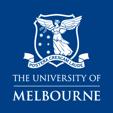

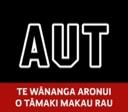
anzca.edu/rosi
ROSI aims to provide healthcare facilities with practical, user-friendly resources that answer the four main questions related to Opioid Stewardship Programmes:
•Who do you need?
•Where do you start?
•What do you search?
•How do you change?
In 2022, recognising that Opioid Stewardship is an increasingly important patient safety initiative, the Australian Commission for Safety and Quality in Health Care (ACSQHC) published the Opioid Analgesic Stewardship in Acute Pain Clinical Care StandardsAcute care edition (CCS).1
Despite a plethora of academic publications and the availability of many existing resources, clinicians consistently report that they find it challenging to implement opioid stewardship programs and recommendations contained within the CCS.
Resources contained within the ROSI have been developed by a team of multidisciplinary clinicians experienced in facilitating changes in opioid prescribing. Significant improvements in patient safety and other outcome measures can be demonstrated when the resources contained within the toolkit are incorporated into Opioid Stewardship programs.
Reference: 1. Australian Commission on Safety and Quality in Health Care. Opioid Analgesic Stewardship in Acute Pain Clinical Care Standard (2022). From https://www.safetyandquality.gov.au/publications-andresources/resource-library/opioid-analgesic-stewardship-acute-pain-clinical-care-standard-2022 Accessed January 2024.
The Resources for Opioid Stewardship Implementation (ROSI) have been developed by Bernadette Findlay and Assoc. Prof. Jennifer Stevens, St Vincent’s Hospital, Sydney, in conjunction with the Faculty of Pain Medicine.
ROSI is supported by an unrestricted educational grant from CSL Seqirus

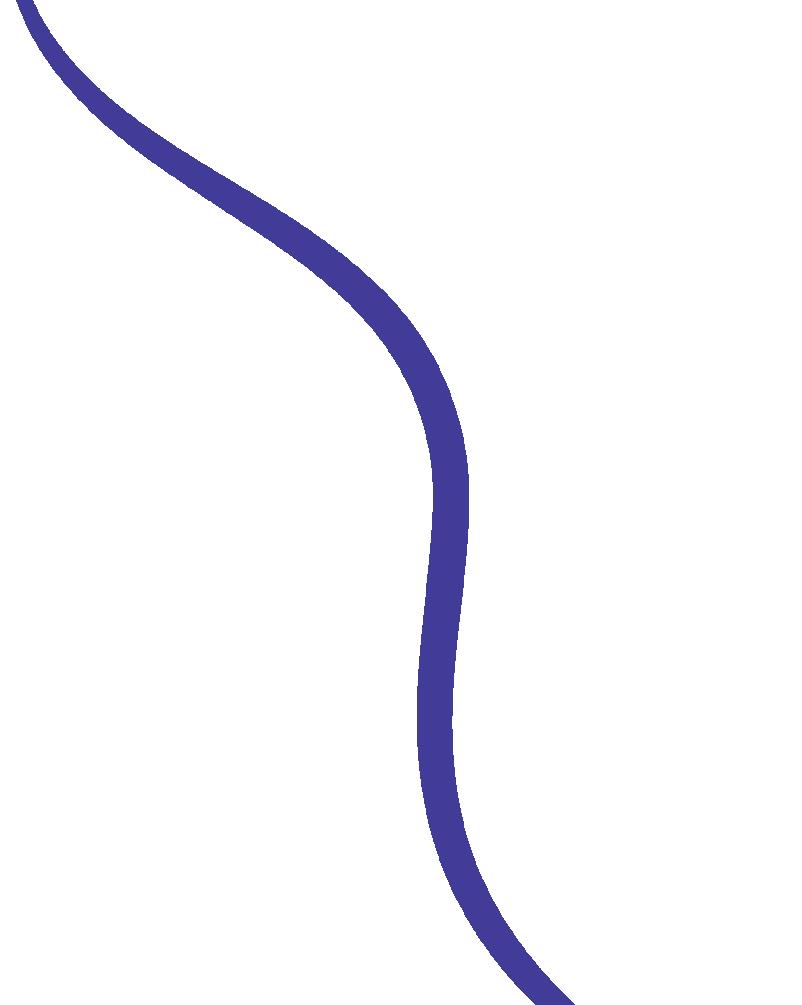




For sponsorship and exhibition opportunities or more information please contact:
APS Conference Secretariat: DC Conference & Association Management (DCC&A)
P: 61 2 9954 4400
E: apsasm@dcconferences.com.au

• Trainee Session
Professor Christine Chambers, Dalhouse University, Canada
Dr Christine Chambers is the Canada Research Chair (Tier 1) in Children’s Pain, a Professor of Psychology & Neuroscience and Pediatrics at Dalhousie University in Halifax, Nova Scotia, and a clinical psychologist. She also serves as the Scientific Director of the Canadian Institutes of Health Research’s Institute of Human Development, Child and Youth Health.
She is also the Scientific Director of Solutions for Kids in Pain - a national knowledge mobilisation network whose mission is to improve children’s pain management.
Professor Cheryl L. Stucky, Medical College of Wisconsin, USA
Cheryl Stucky is the Marvin Wagner Endowed Chair at the Medical College of Wisconsin where she is also Director of the Pain Division of the Neuroscience Research Center.
Dr Stucky’s lab studies the molecular, cellular and physiological mechanisms of sensation, particularly how we sense touch and pain. The central theme of Dr Stucky’s lab is to study the molecular and physiological mechanisms that underlie somatosensory mechanotransduction in the normal, healthy state and in conditions of tissue injury or disease.

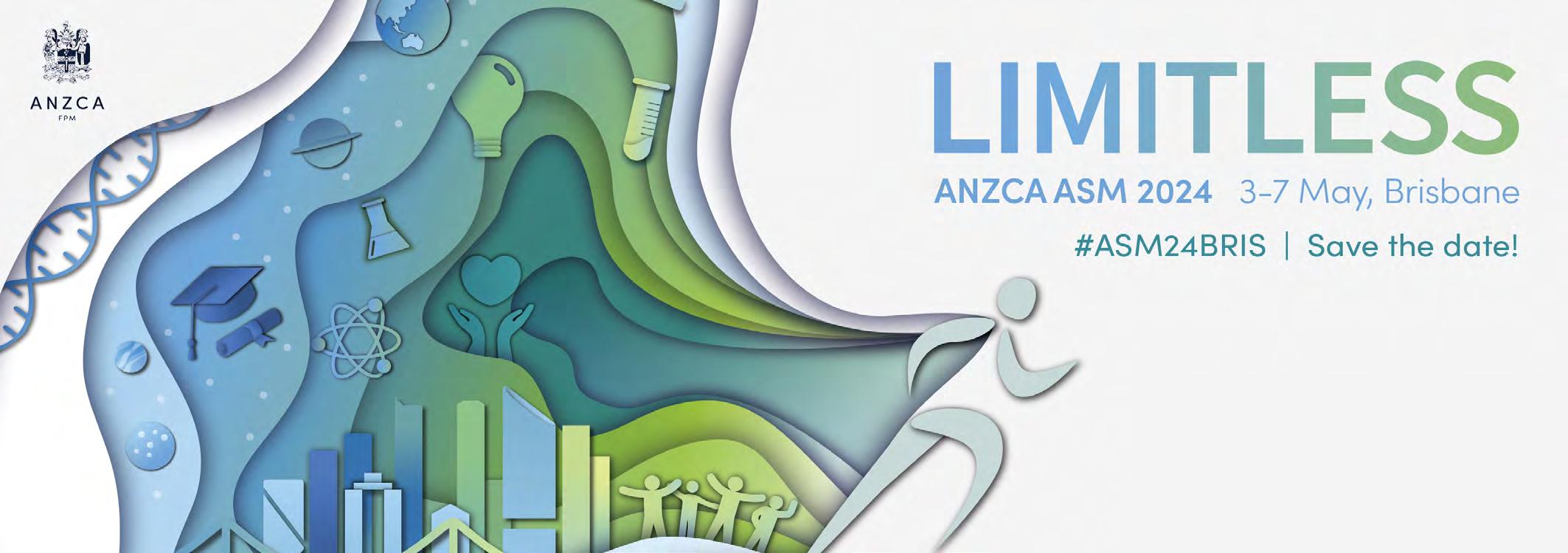
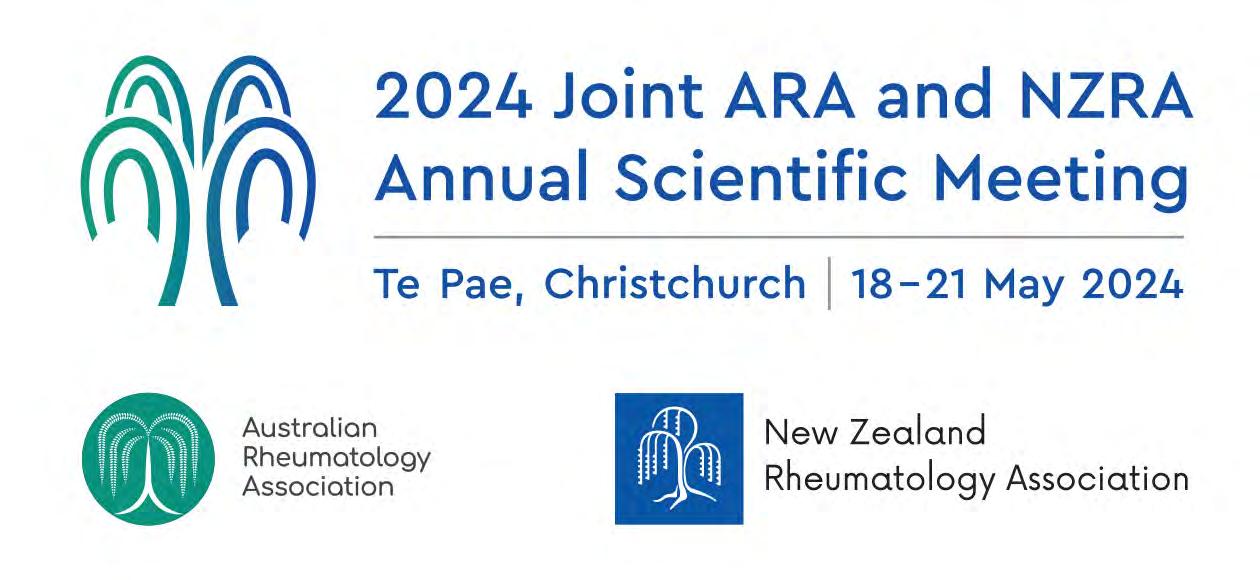



SAVE THE DATE | 19 - 21 JULY 2024
www.dcconferences.com.au/nsanz2024

NEUROMODULATION SOCIETY OF AUSTRALIA AND NEW ZEALAND
17TH ANNUAL SCIENTIFIC MEETING (NSANZ 2024)
Neuromodulation: Can we do it better?
19 – 21 JULY 2024
HOTEL GRAND CHANCELLOR, HOBART, TAS

INCLUDES CADAVER WORKSHOP
Friday 19 July 2024,


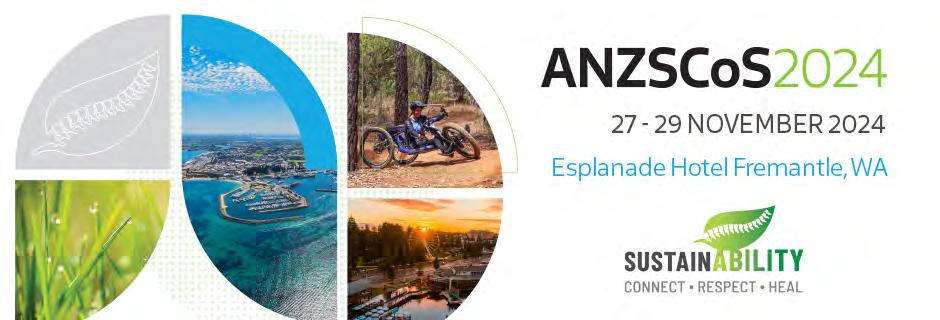
> Music Therapy for Chronic Pain Management Seminar held in conjunction with the Australian Music Therapy Association and The University of Melbourne, 20 March 2024, access the recording via the Member’s Portal link: https:// www.apsoc.org.au/Login.aspx
> Latest opioid data from the Australian Bureau of Statistics: Opioid induced deaths in Australia. https://www.abs.gov.au/articles/opioid-induceddeaths-australia
> Australia’s annual overdose report 2023 from the Pennington institute: https://www. penington.org.au/australias-annual-overdosereport/
> Opioid Podcasts for GPs: These podcasts are produced by David Outridge GP, and FAChAM Trainee as a project under the auspices of Dr Steven Kelly Staff Specialist in Addiction Medicine, Kullaroo Clinic Gosford. A 20 week series from the Hunter Postgraduate Medical Institute (University of Newcastle) : http://www. gptraining.com.au/recent-podcasts
> Airing Pain: Pain resources via an online radio show produced by Pain Concern, a UK registered Charity: http://painconcern.org.uk/ airing-pain/
> Indigenous Resources: New webpage on the APS website aggregating Indigenous resources: https://www.apsoc.org.au/Indigenous-Resources
> Opioids: Communications videos: https://www. nps.org.au/opioids-communication-videos

> The Third Australian Atlas of Healthcare Variation: This series explores how healthcare use in Australia varies depending on where people live. It investigates reasons for variation that may be unwarranted, and provides specific achievable actions to reduce unwarranted variation. https://www.safetyandquality.gov.au/atlas
> Painaustralia eNewsletter latest issue, available online at http://www.painaustralia.org.au/media/ enews
> ePPOC: electronic Persistent Pain Outcomes Collaboration: The electronic Persistent Pain Outcomes Collaboration (ePPOC) is an Australasian initiative that aims to improve the quality of care and outcomes for people who experience chronic pain. For more information about ePPOC, refer to the website: http://ahsri. uow.edu.au/eppoc/index.html
> PainHEALTH website: painHEALTH‘s aim is to help health consumers with musculoskeletal pain access reliable, evidence-based information and tips to assist in the comanagement of musculoskeletal pain. painHEALTH is an initiative of the Department of Health, Western Australia http://painhealth. csse.uwa.edu.au/
> Stanford University: CHOIR Collaborative Health Outcomes Information Registry https://choir. stanford.edu/
> Codeine information hub: https://www.tga.gov. au/codeine-information-hub-how-and-whereget-advice
resources:
> Brainman and Pain Tool Kit translations, SEP15: http://www.aci.health.nsw.gov.au/chronic-pain/ translated-resources
> Pain Management Resources: https://aci. health.nsw.gov.au/networks/pain-management/ resources
> Quicksteps to Manage Chronic Pain in Primary Care: http://www.aci.health.nsw.gov.au/chronicpain/health-professionals/quick-steps-tomanage-chronic-pain-in-primary-care
> Built into Quicksteps: “How to de-prescribe and wean opioids in general practice”: http:// www.aci.health.nsw.gov.au/chronic-pain/healthprofessionals/quick-steps-to-manage-chronicpain-in-primary-care/how_to_de-prescribe_and_ wean_opioids_in_general_practice
> A list of helpful apps for consumers and clinicians now available at: http://www. aci.health.nsw.gov.au/chronic-pain/healthprofessionals/management-of-chronic-pain
> Chronic Pain in the ED: https://www.aci.health. nsw.gov.au/networks/eci/clinical/clinicalresources/clinical-tools/pain-management/ chronic-pain-in-the-ed

New Members as at 26 February 2024
Dr Nicholas Aitcheson Pain Medicine Physician
Miss Tanushka Alva Physiotherapy
Dr Phill Bokiniec Science Research
Dr Asha Chitrarasu Psychiatry
Ms Justine Clark Psychology
Dr Eloise Cowie Psychology
Miss Miriam Dillon Physiotherapy
Mrs Tracey-Leigh Dunning Physiotherapy
Ms Emma-Jane Fox Psychology
Dr David Gore Pain Medicine Physician
Mrs Amy Granger Nursing
Dr Katherine Hauser Palliative Care
Mrs Joanna Huckle Nursing
Miss Aayushi Khillan Paediatrics
Mr Andrew Natoli Exercise Physiologist
Miss Abbie Norrish Physiotherapy
Mrs Nayomi Ranathunga Musculoskeletal Medicine
Miss Mohini Rawjee Occupational Therapy
Mr Liam Roussos Exercise Physiologist
Dr Duncan Sanders Physiotherapy
Dr Saurab Sharma Physiotherapy
Miss Kate Shepherd Occupational Therapy
Mr Drew Singleton Physiotherapy
Miss Jessica Smith Occupational Therapy
Miss Emily Walker Exercise Physiologist
Mrs Grace Williams Nursing
Mrs Marelle Wilson Physiotherapy
Miss Sophie Young Pharmacy
Ms Caroline Zanussi Physiotherapy
Mr Ramen Zwagerman Nursing
Renewal notices for 2024 have been sent by email to members, check your inbox!
Thank you for your continued support and membership of the APS.
Please note:
1. We understand that circumstances change, so each year we ask you to select your appropriate level of membership.
2. This system of self-reporting subscription levels was implemented in 2009 for the benefit and fairness of all members.
NO INCREASE in membership fees for 2024!
BLOG WEB

a. Regular A $120
b. Regular B $230
c. Regular C $370
d. Retired $65 Concessional Rate
e. Student $65 Concessional Rate
Before renewing, please ensure you review and update your member profile online.
Payments can be made by Credit Card, BPAY, or Cheque.
Did you know that the Australian Pain Society is a registered charity with ACNC? Your donation will help the Society to promote the prevention and control of diseases in human beings associated with pain.
All donations of $2 or more to APS are tax-deductible.
21-24 March 2024
New Zealand Pain Society (NZPS)
NZPS 2024 - Empowering Pain Management in New Zealand
The Dunedin Centre, Dunedin, NZ
https://www.nzps2024.nz/
5-7 April 2024
Spine Society of Australia (SSA)
2024 Spine Society of Australia 35th Annual Scientific Meeting
International Convention Centre (ICC), Sydney, NSW
https://www.dcconferences.com.au/ssa2024/ home
21-24 April 2024
Australian Pain Society (APS)

2024 Australian Pain Society 44th Annual Scientific Meeting
Darwin Convention Centre, NT
https://www.dcconferences.com.au/aps2024/
2-4 May 2024
Exercise & Sports Science Australia (ESSA)
Research to Practice 2024
International Convention Centre (ICC), Sydney, NSW
https://www.researchtopractice2024.com.au/ event/7b82256c-0d69-4710-96eb-57a8df5fed26/ summary
3-7 May 2024
Australian and New Zealand College of Anaesthetists (ANZCA)
ANZCA 2024 Annual Scientific Meeting
Brisbane Convention & Exhibition Centre, Brisbane, QLD
https://www.anzca.edu.au/events-courses/events/ major-events/anzca-national-events/2024-anzcaasm
18-21 May 2024
Australian Rheumatology Association & New Zealand Rheumatology Association
2024 Joint ARA and NZRA Annual Scientific Meeting
Te Pae, Christchurch, NZ
https://www.nzra-ara2024.com/
31 May 2024
Dietitians Australia
Dietitians Unite 2024
Doltone House, Pyrmont, Sydney NSW
https://dietitianconnection.com/event/dietitiansunite-2024/
4-6 June 2024
British Pain Society (BPS)
British Pain Society 57th Annual Scientific Meeting ‘24
East Midlands Conference Centre, Nottingham, UK
https://bpsasm.org/
13-14 June 2024
Occupational Therapy Australia
2024 OT Exchange
Perth Convention & Exhibition Centre, Perth, WA
https://www.otausevents.com.au/otexchange2024
19-21 July 2024
Neuromodulation Society of Australia and New Zealand (NSANZ)
2024 Neuromodulation Society of Australia & New Zealand 17th Annual Scientific Meeting (NSANZ 2024)
Hotel Grand Chancellor, Hobart, TAS
https://www.dcconferences.com.au/nsanz2024/
5-9 August 2024
International Association for the Study of Pain (IASP)
IASP 2024 World Congress on Pain Amsterdam RAI, Amsterdam, Netherlands https://www.iasp-pain.org/iasp-2024-worldcongress-on-pain/
19-22 August 2024
Neurosurgical Society of Australasia (NSA)
NSA 79th Annual Scientific Meeting
Darwin Convention Centre, Darwin, NT https://2024.nsa.org.au/
16-18 September 2024
National Rural Health Alliance
17th National Rural Health Conference
Perth Convention & Exhibition Centre, Perth, WA
https://www.ruralhealth.org.au/17nrhc/

18-20 October 2024
Faculty of Pain Medicine (FPM) 2024 FPM Spring Meeting
Pullman Auckland Hotel & Apartments, Auckland, NZ
https://members.anzca.edu.au/anzca/anzca/ EventDetail?EventKey=FPM_2024
27-29 November 2024
Australian & New Zealand Spinal Cord Society (ANZSCoS)
ANZSCoS 2024
Perth Convention & Exhibition Centre, Perth, Esplanade Hotel, Fremantle, WA
https://www.dcconferences.com.au/ anzscos2024/
Vision:
All people will have optimal pain management throughout life.
Purpose:
The Australian Pain Society is a multidisciplinary association whose purpose is to advance pain management through education, research, and advocacy for transformational improvements in clinical care.
Priorities:

In order to achieve our purpose, the Australian Pain Society will provide:
> Membership
> Research
> Education
> Services and resources
> Good governance and operations
> Advocacy

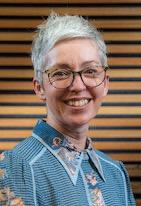





President:
Mrs Joyce McSwan
Gold Coast Primary Health Network
Persistent Pain Program, QLD and PainWISE
Tel: 0412 327 795 Fax: 07 3539 9801
President-Elect:
Ms Bernadette Smith
Psychology Plus
South Burnie TAS
Tel: 03 6431 9959 Fax: 03 6431 9950
Secretary:
Mrs Dinah Spratt
Physiotas Physiotherapy
Shearwater TAS 7307
Tel: 03 6428 7500 Fax: 03 6424 7811
Treasurer:
Dr Laura Prendergast
Pain Service, Northern Health
Broadmeadows VIC 3047
Tel: 03 8345 5166 Fax: N/A
Work days Mon & Thu
ACT Director:
Dr Andrew Watson
Calvary Hospital
Canberra ACT 2617
Tel: 02 6201 6352 Fax: N/A
NSW Director:
Mr Connor Gleadhill
Department of Health and Aged Care
Primary Care Division
Newcastle NSW 2038
Tel: 0405 203 661 Fax: N/A





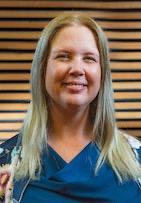
NT Director:
Adjunct A/Prof Cindy Wall
Clinical Psychology Assessment & Consultancy
Fannie Bay NT 0820
Tel: 0488 993 210 Fax: 08 6266 3777
QLD Director:
Mrs Karalyn Huxhagen
KH Pharmacy Consulting
Mackay QLD 4740
Tel: 0418 185 972 Fax: 07 4805 6155
SA Director:
Ms Heather Gray
Royal Adelaide Hospital
Adelaide SA 5000
Email: heather.gray@sa.gov.au
TAS Director:
Mr Sinan Tejani
InBalance Physiotherapy
Launceston TAS 7250
Tel: 0469 967 841 Fax: N/A
VIC Director:
Dr Esther Dube
Austin Health
Heidelberg VIC 3084
Tel: 03 9989 1676 Fax: N/A
WA Director:
Ms Jacintha Bell
Lifeworks Occupational Therapy
Subiaco WA 6008
Tel: 0451 178 880 Fax: 08 6323 3329


Immediate Past President:
Ms Trudy Maunsell
Retired
QLD SPC Chair:
Professor Kevin Keay
Department of Anatomy
University of Sydney
Camperdown NSW 2006
Tel: 02 9351 4132 Fax: 02 9351 2817



IASP Liaison:
Professor Fiona Blyth AM
Sydney School of Public Health
Faculty of Medicine and Health
University of Sydney
Camperdown NSW 2006
Email: fiona.blyth@sydney.edu.au

Communications Coordinator:
Mrs Joyce McSwan
Gold Coast Primary Health Network
Persistent Pain Program, QLD and PainWISE
Tel: 0412 327 795 Fax: 07 3539 9801

Newsletter Editor:
Dr Lincoln Tracy
School of Public Health and Preventive Medicine
Monash University
Melbourne VIC 3004
Tel: 03 9903 0288
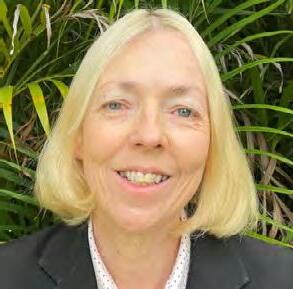

Newsletter Assistant Editor:
Dr Joanne Harmon
School of Clinical and Health Sciences
University of South Australia
Adelaide SA 5000
Tel: 08 8302 1442
Scholarship/Grant Selection Subcommittee Co-Chairs:
Em Prof Maree Smith AC
Centre for Integrated Preclinical Drug Development
University of Queensland St Lucia QLD 4072
Prof Luke Henderson
Anatomy & Histology, School of Medical Sciences
Brain & Mind Centre
University of Sydney
Camperdown NSW 2006

Secretariat:
DC Conference & Association Management Pty Ltd
PO Box 637
North Sydney, NSW 2059
Tel: 02 9016 4343
Email: aps@apsoc.org.au
Website: apsoc.org.au